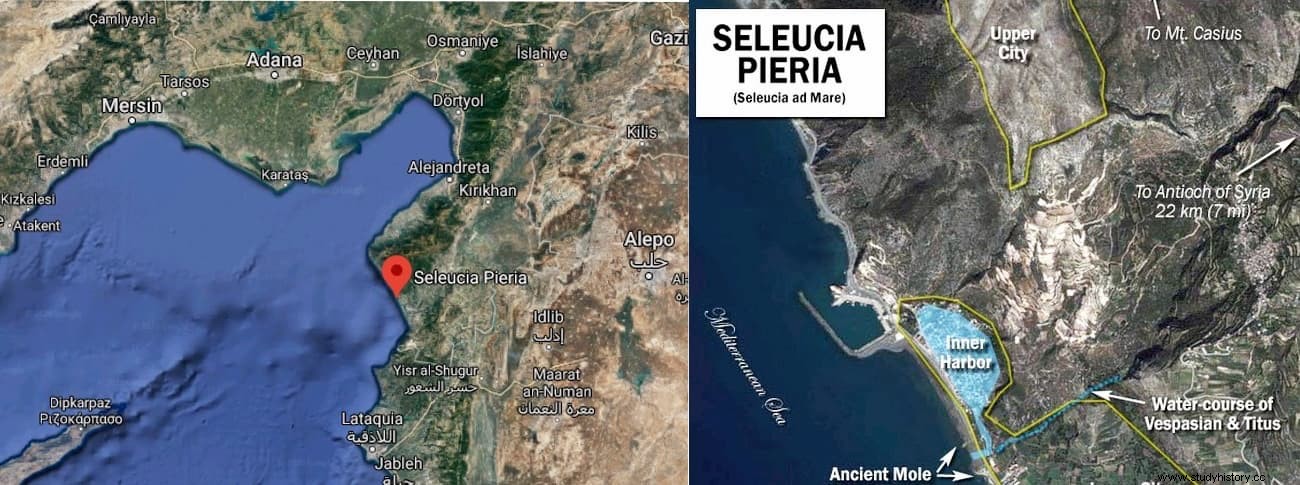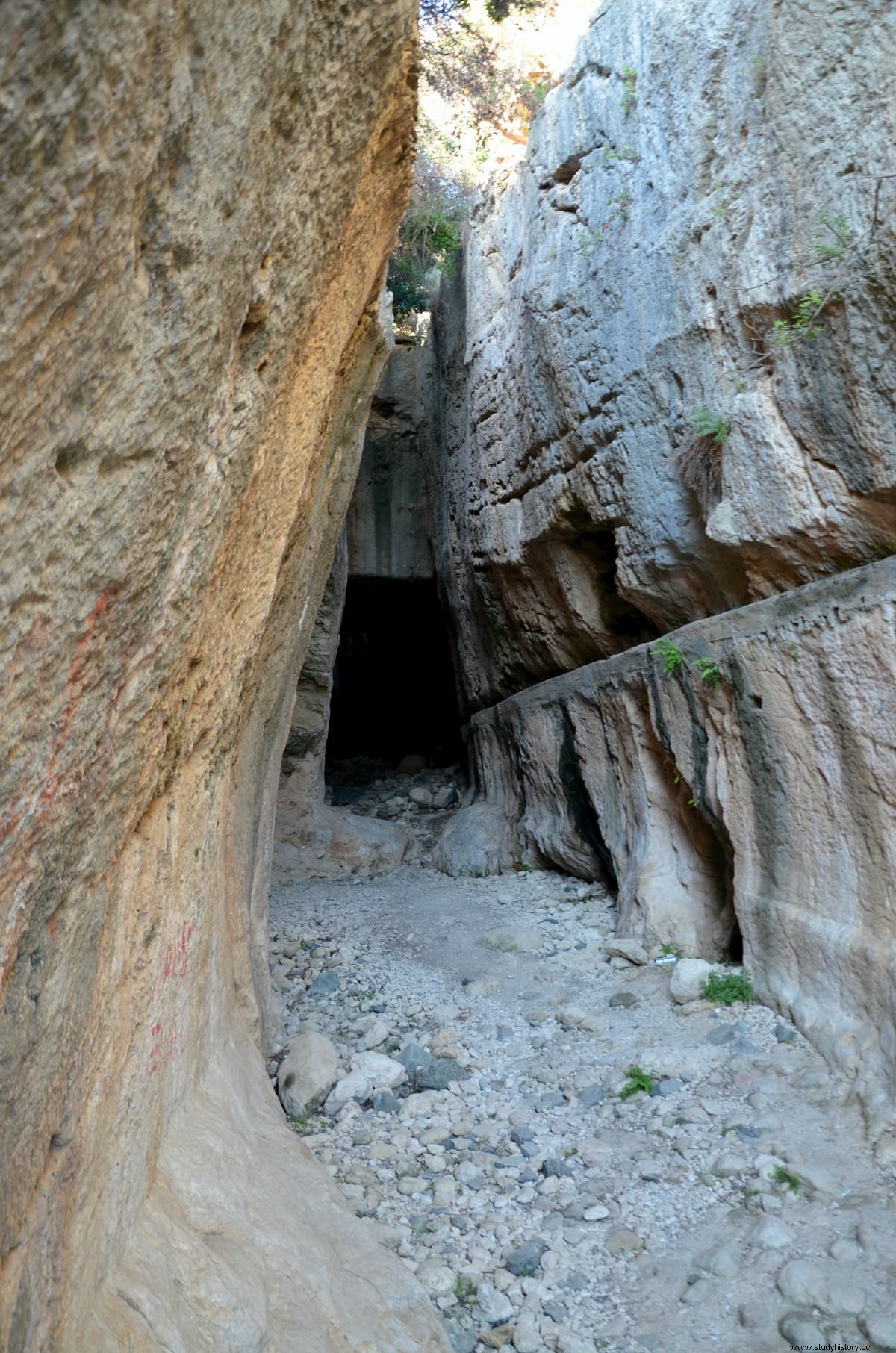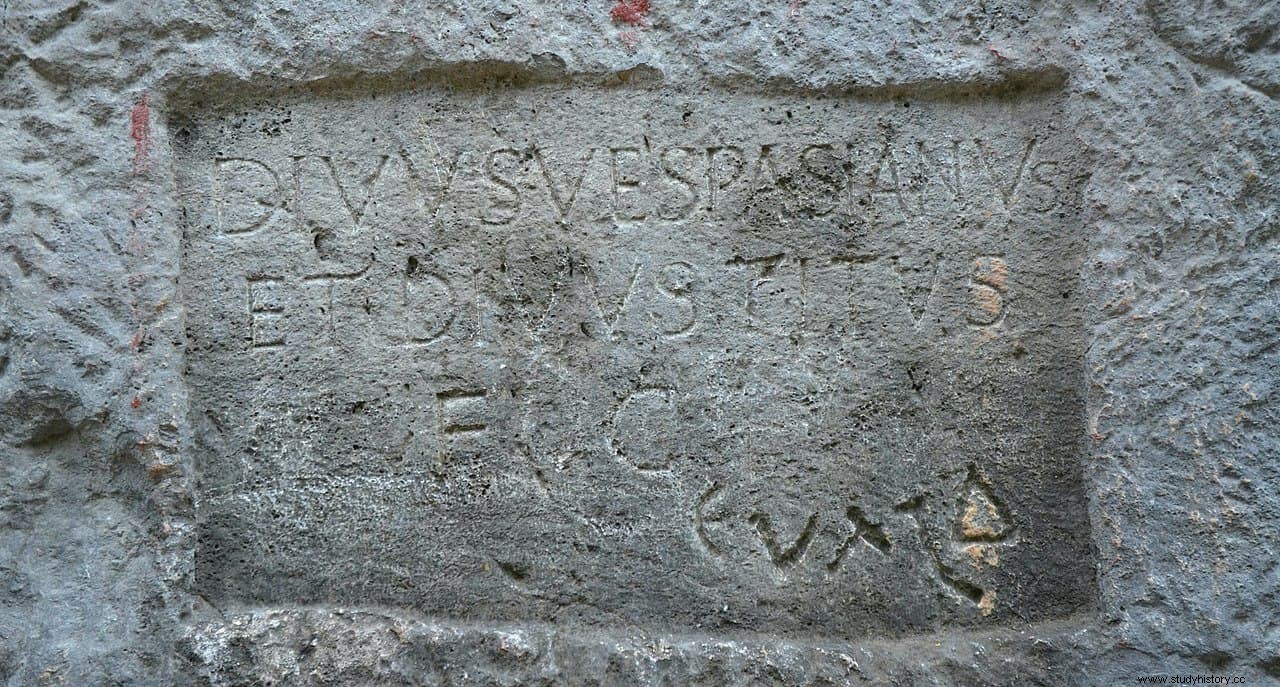Around the year 300 B.C. Seleucus I founded, on the current southeast coast of Turkey, the city of Seleucia Pieria. Located north of the mouth of the Orontes River and at the foot of the Amanus Mountains, he gave it the name of Pieria, because the place reminded him of the Macedonian region of the same name.
Seleucia Pieria soon became the seaport of the main city in the area, Antioch on the Orontes, and constituted a strategic enclave for the control of the Syrian region. For this reason, in the year 64 B.C. it was conquered by Pompey's troops, incorporating it into the Roman Empire.

From the Amanus mountains a stream flowed down to flow into Seleucia Pieria, which crossed the walls (whose perimeter was 12 kilometers), ran through the center of the city and came out to the sea just by the port area. In the first years this was not a problem, but after a few decades the sediments carried by the river began to accumulate in the port, which made it necessary to regularly dredge it. The problem worsened during the thaw, when the river grew, producing frequent floods.
So in the 1st century AD, when Vespasian was emperor, it was decided to channel the river, diverting it so that it would surround the city instead of going through it. A dike or diversion dam and a channel that crosses two artificial tunnels were projected, all excavated in the rock in a set that reaches 875 meters in length. The work could not be completed during Vespasian's lifetime, and was continued by his son Titus, finishing it already in the second century Antoninus Pius.

The dam is made of masonry and was 16 meters high (now reduced to 4 meters due to the accumulation of alluvial deposits), 5 meters wide and 175 meters long, and is located 44.30 meters above sea level. It is composed of two layers of masonry with cut stone and a core of opus caementicium . The Roman engineers knew how to give this wall the adequate concavity that has allowed it to survive until today. It is completed with a shallow embankment 126 meters long in the upstream direction.
Next is the approach channel, which is 55 meters long and converges at the entrance to the first section of the tunnel. It has a rectangular shape and is excavated in the limestone.

The first section of the tunnel is vaulted in the first 3 meters, 6.3 meters wide, 5.8 meters high at the entrance and 90 meters long. A second channel, 64 meters long, connects this first section of the tunnel with the second.
The second section of the tunnel is 31 meters long, wider and higher at the entrance (both 7.3 meters) than at the exit (5.5 meters wide and 7 meters high). Both tunnels have a small spring water transport channel carved into the left wall, 0.4 meters wide and 0.3 meters high.
At the exit of the second section of the tunnel there is an aqueduct arch that crosses the discharge channel. This channel is 635 meters long. The hydraulic capacity of the system is estimated at around 70 cubic meters per second, while that of the tunnels is 150 cubic meters per second.

The entire system was built using only human power, to protect the city from flooding and prevent siltation of the port, while meeting the city's water needs during the summer.
The men who built it were, according to Flavius Josephus, legionnaires from the IIII Scythica Legion and the XVI Flavia Firma Legion, along with Jewish prisoners captured by Titus in the taking of Jerusalem in AD 70. The engineers who designed it belonged to Legion X Fretensis.

According to UNESCO, it is one of the best examples of Roman engineering and one of the unique structures in the Roman world that offers solutions to urban problems . From the point of view of architectural and engineering implementation, the tunnel is a peculiar structure that has survived to this day without any damage. This man-made structure is also testimony to the eastern Mediterranean world and Roman diplomacy of the 1st and 2nd centuries AD. The Vespasian and Titus tunnel is one of the largest water tunnels in the world with a cross section .
Today the complex can be visited at the foot of the Nur mountains, next to the modern city of Çevlik, about 35 kilometers southwest of Antakya (ancient Antioch).
An inscription carved into the rock at the entrance to the first tunnel section bears the names of Vespasian and Titus, and another located in the exit channel, that of Antoninus.

Despite the river diversion system and all the efforts made over decades, by the 5th century the port was silted up and the city declined, losing its commercial importance. In 540 AD it was conquered by the sasánidas, and definitively abandoned shortly after.
As for the system of tunnels and canals, the French archaeologist Victor Chapot, who visited it in the early 20th century, found that where the canal curves sharply to the west, it is broken . According to him, this breach at that point cannot be of natural origin and he believes that it was made on purpose during the Arab invasion. It is through this opening that much, if not all, of the debris still escapes today .
